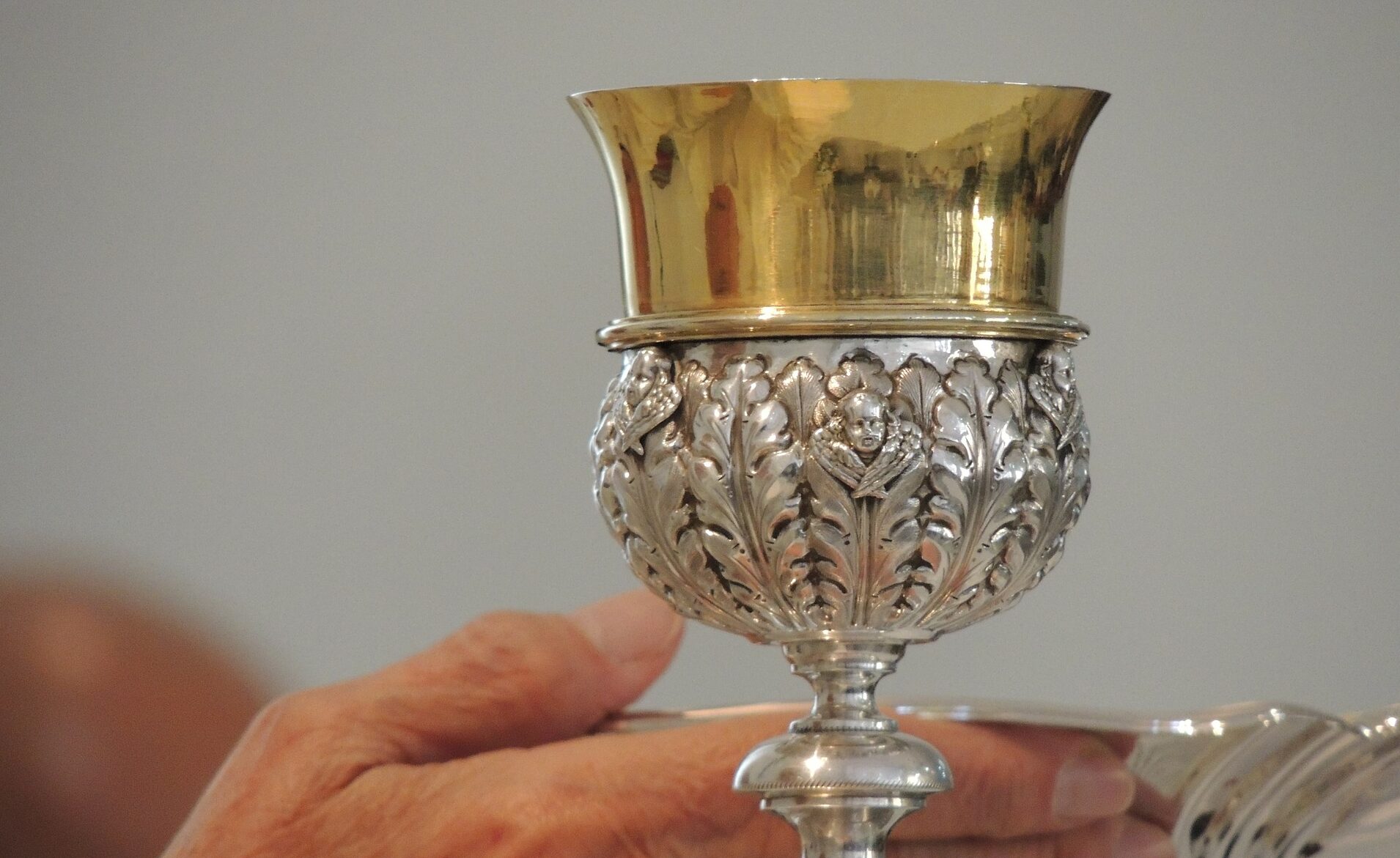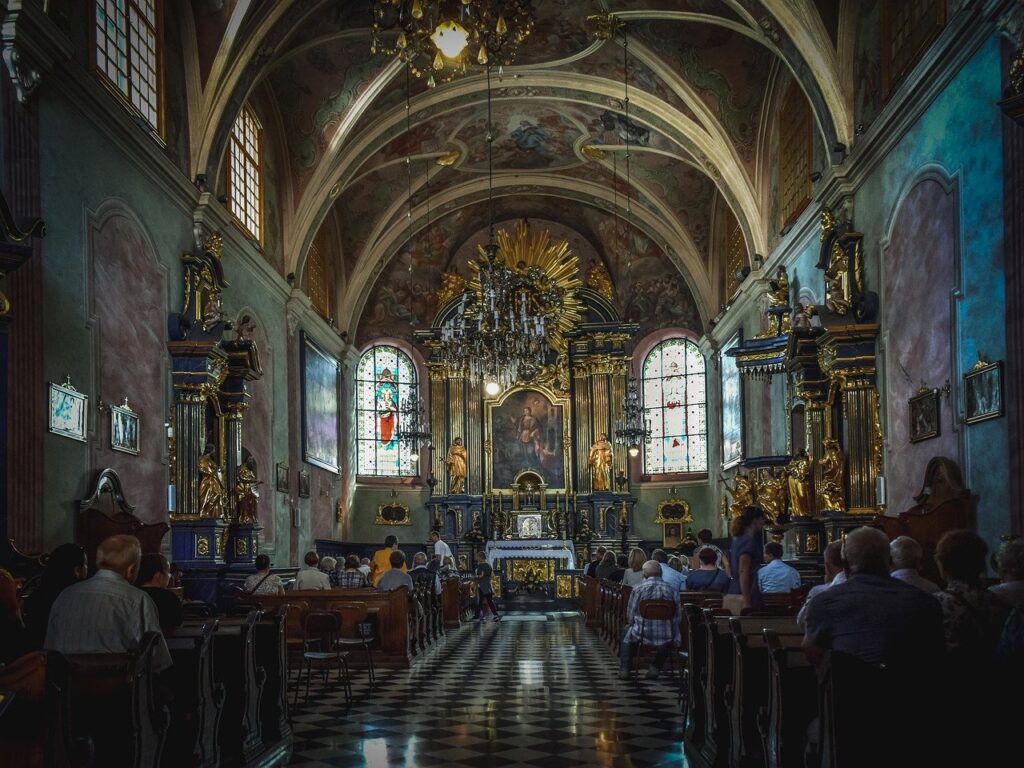Presentation of the 2021 Report on the situation of the Catholic Church in Poland


pixabay.com
The Catholic Information Agency KAI, on Friday March 5, presented the situation of the Polish Church. It provided data on religious life, vocations and the commitment of the lay faithful, with particular reference to pastoral and social areas: in the fields of charity, culture, education, science, the media, support to family and to people with disabilities, initiatives to combat and prevent child abuse.
91.9% of Poles call themselves Catholic, 0.9% Orthodox and 3.1% declare they have no faith. In 2019, 32,461,000 faithful were considered to belong to the Catholic Church, gathered in 10382 parishes with a rate of religiosity among the highest in Europe: 36.9% of Catholics regularly participate in Holy Mass. Secularization is also underway in Poland, although not so evidently in comparison with other European countries. The number of those who declare themselves in favor of the teachings of the Church on moral issues, particularly in the sphere of sexual ethics, is getting smaller and smaller. For example, only 20% of the faithful consider premarital cohabitation inadmissible.
Among young people, religious practice has halved in about 30 years. According to the Report of the KAI Agency, young believers and practitioners are 30.1%, young believers and little practitioners are 21.6%, while non-practitioners are 18.5%. 50.7% of students believe that the Church is not an authority for them. The decline in esteem in the Church is worrying: for many years about 55/60% had estimated it, in December 2020 only 41%, while it rose again in January 2021 to 46%.
The Covid-19 pandemic, if on the one hand highlighted the process of weakening of collective religious practices and ties with the parish already underway in recent decades, on the other hand it allowed to see the strengthening of family ties and religiosity that it opens to the search for the transcendent and to seek answers to spiritual needs in Catholicism.
There are 1050 sanctuaries in Poland, of which 793 are Marian. The most important remains that of Jasna Góra, which recorded 4,400,000 pilgrims in 2019, of which 133,000 made the pilgrimage on foot. The Sanctuary of Divine Mercy, linked to the apparitions of Jesus to Saint Faustina Kowalska annually records about 2 million pilgrims from 90 countries.
The Catholic Church in Poland can count on the presence of 2 cardinals, 29 archbishops, 123 Bishops (of which 4 of the Byzantine-Ukrainian rite) and on 33,600 priests (of which 24,700 diocesan and 8,900 religious) and about 1,200 and simple religious from 59 Congregations. There are about 19,000 sisters, grouped into 104 religious institutes and 13 congregations of contemplative life. To these are added over 2.5 million lay faithful who lend their work in the parishes or communities to which they belong.
In 2020 the total number of seminarians was 2556. According to the information provided to the KAI by the Conference of Rectors of Higher Theological Seminaries, in the academic year 2020/2021, 438 new candidates for the priesthood are in formation, of which 289 in diocesan seminaries and 149 in religious orders, the most numerous of which are at the Dominicans. However, it should also be considered that the abandonment of the priesthood, from 2000 to 2017, had an average of 56 per year.

pixabay.com
There are 2697 Polish missionaries in the world, of which 500 are diocesan priests, 1283 religious, 875 nuns and 39 lay missionaries.
Caritas Polska is the most important charity after the State and carries out aid programs in Poland and abroad. It groups 44 diocesan Caritas to which 3,250 parish Caritas refer, and 834 aid points managed by men and women religious. In total, about half a million people are thought to care for the poor. The various voluntary associations also contribute to forming a mentality of solidarity and to help those in different situations of need.
According to the 2018 data, only 8% of practicing laity are permanently engaged in communities, associations or organizations, both historical (such as Franciscans, Dominicans and Lay Carmelites, Living Rosary), and more recent, such as Catholic Action, Renewal in Spirit, the Neocatecumenal Way or Opus Dei. The most widespread popular piety remains the Marian one. To these movements are added the recent movements for life, the clubs to rediscover the value of fatherhood and the Knights of Columbus.
Catholic education takes place thanks to 487 Catholic schools, of which 259 elementary and middle schools, 173 high schools and 55 special schools (data from 2019), in which over 70,000 students study, of which about 2,500 in ‘special’ schools. There are 2 Catholic Universities: the John Paul II Catholic University of Lublin and the John Paul II Pontifical Catholic University of Krakow. In addition there are the Catholic Academy of Warsaw, the “Ignatianum” Academy of the Jesuit Fathers in Krakow and the Pontifical Theological Faculty of Wroclaw. To these are added the Faculties of Theology at the Universities of Katowice, Poznań, Toruń, Opole, Olsztyn and Szczecin.
Among the hundreds of annual cultural initiatives, it is worth mentioning the Congress of Christian Culture in Lublin, an international event dedicated to culture and organized by the Church in Poland, now in its 6th edition, and the Gniezno Convention, with a multi-year term, an international meeting which sees the participation of the clergy of various denominations, politicians, people of science and culture and has as its objective the reflection on the spiritual situation of Europe and the support of the responsibility of Christians in this area. In addition, Christian music festivals, religious films, organ concerts and the Catholic Publishers’ Fair became a fixture in Poland’s cultural landscape after 1989. Their presence is a valuable component of the national culture. The Catholic Church takes care of the conservation of about 13 thousand historic churches and about 100 diocesan, religious and parish museums.
Catholic media currently consists of 4 national weeklies, 44 radio stations, Radio Maryja nationwide, Catholic newsrooms in public and private media such as Telewizja Trwam. The fastest growing sector – and very useful in the period of the pandemic – is that of Catholic Internet portals. An important role at national level is played by the Catholic Information Agency (KAI) of the Polish Bishops’ Conference and the Opoka Foundation, the electronic portal at the service of the Catholic Church for the creation of systems for the electronic exchange of information, also wanted by the Polish Episcopal Conference.
From the socio-health point of view, there are very numerous nursing homes for the elderly, hospitals and hospices for the terminally ill, clinics and health centers of Catholic origin. There are also equipment rental centers for the rehabilitation of the disabled, rehabilitation centers, occupational therapy laboratories, family homes, etc. For the children there are orphanages, care facilities, care and education centers for disabled and orphaned minors, as well as therapeutic centers. Families can count on the help of specialized family clinics, district clinics, parish family counseling centers, family support centers, support centers for victims of violence, centers for adoption. Homes for single mothers, homes for mothers with minor children and for children abandoned after birth are active. The homeless and the poor can turn to clothes distribution points, food service centers and canteens, shelters and hostels. For the unemployed there are social integration centers and social cooperatives, to which are added assistance centers for migrants and refugees, and homes for returnees.
In the context of ecumenism, Poland is probably the only country in the world where there are common inter-ecclesiastical bodies, supported by the authority of the Catholic Bishops’ Conference. Indeed, it has established bilateral commissions for dialogue with the Orthodox, Lutheran, Polish-Catholic and Adventist churches.
An important chapter concerns the fight against and the prevention of sexual abuse of minors by members of the ecclesial community. The child protection system was implemented starting from 2009, when the Bishops’ Conference adopted the first Guidelines defining the procedure to be followed in cases of sexual abuse of minors by priests and, more recently, it applied the rules introduced by Pope Francis with the Motu Proprio “Vos estis lux mundi” also concerning the Bishops or religious Superiors who had covered up such crimes. In 2004 the Child Protection Center was opened at the “Ignatianum” Academy in Krakow, an inter-disciplinary unit that includes training activities in the psychological, pedagogical and spiritual fields linked to the sexual abuse of minors and, at the same time, develops programs of pastoral, formative and educational prevention useful for creating safe environments for minors. In 2019, the Episcopal Conference established a Delegate for the Protection of Minors and the Saint Joseph Foundation whose mission is to protect minors and to build structures that are effective in preventing and supporting the healing of victims of abuse.
The report did not forget the pastoral care for Polish emigrants, presenting initiatives such as holidays abroad in Polish for emigrants, the biennial congress for young Poles residing abroad, and that for emigrant families.
Overall, the report shows that regardless of strong secularizing tendencies, Polish society still has a strong attachment to the faith, and the Church is alive and has enormous apostolic potential.



Wstyd za zamieszczanie na portalu polsko-francuskim artykulow w innych jezykach, np. tutaj po angielsku.
Prawda, nie widzę sensu podawania artykułu w innych językach.